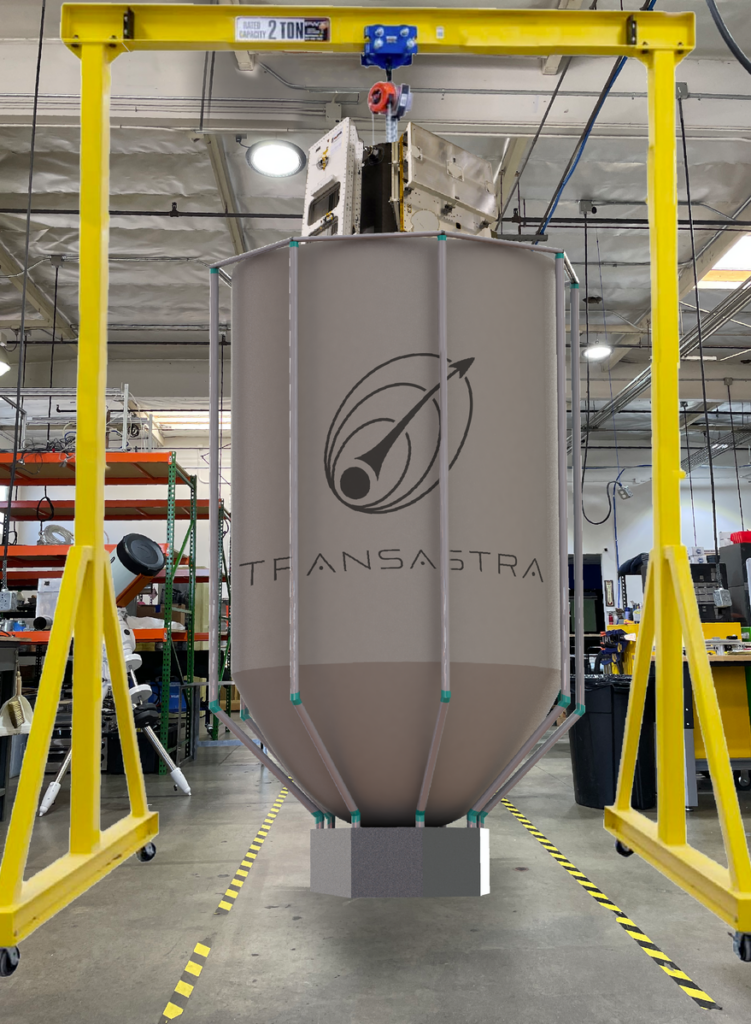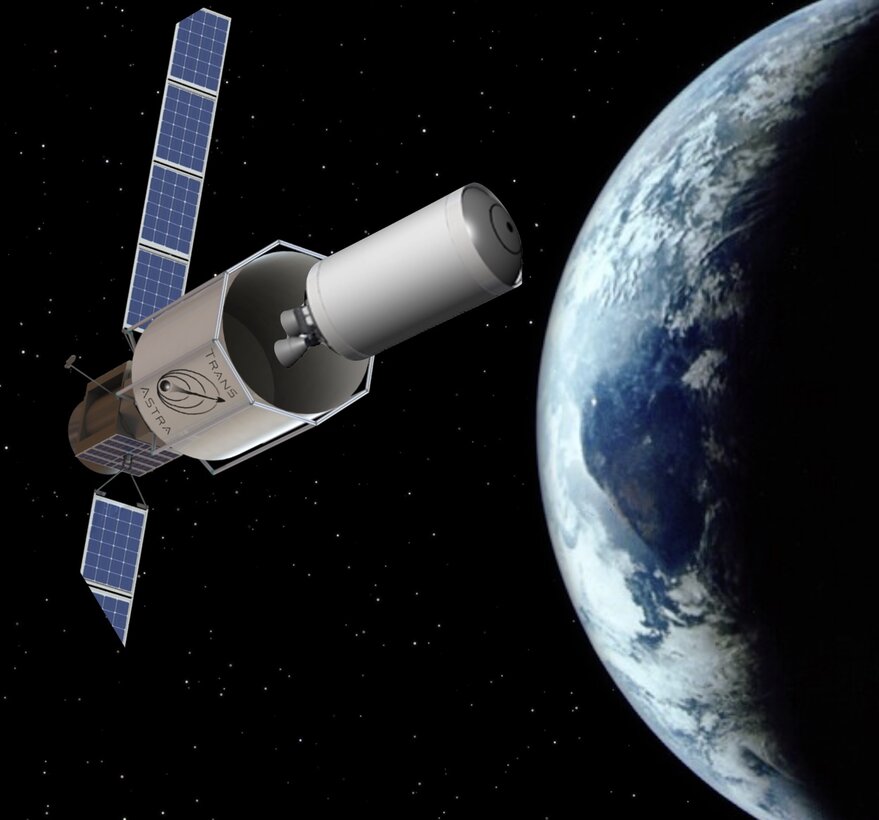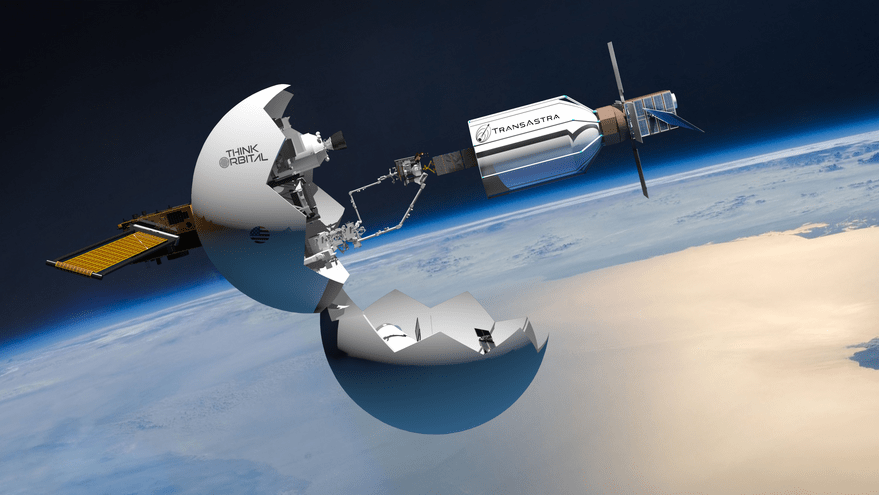TransAstra claims NASA contract for debris capture bag
SAN FRANCISCO – Space logistics startup TransAstra won a NASA contract to manufacture a bag to capture orbital debris.
Under the $850,000 Phase 2 Small Business Innovation Research contract, TransAstra will build an inflatable capture bag and demonstrate on the ground how the device, which uses inflatable struts to open and close, would envelop a noncooperative object.
ARM Heritage
Capture bag technology was invented at the NASA Jet Propulsion Laboratory for the Asteroid Redirect Mission, a plan to rendezvous with a near-Earth asteroid and transport it to cislunar orbit.
TransAstra built a small capture bag in 2021 with NASA Innovative Advanced Concepts funding. The new TransAstra contract was awarded through NASA’s SBIR Ignite program, which supports early-stage technology with potential commercial applications.
“We originally developed this small capture bag prototype to demonstrate asteroid mining in low-Earth orbit with a synthetic asteroid,” Joel Sercel, TransAstra founder and CEO, told SpaceNews. “But we subsequently realized this is the greatest thing ever for orbital debris cleanup.”

Trash Pickup
Small capture bags could retrieve cubesats. Bigger bags could envelop spent rocket bodies, defunct geostationary communications satellites or 50,000-ton asteroids, Sercel said.
Capture bags offer some advantages over other orbital debris cleanup methods.
“It doesn’t require the target to have any fixture that you can grab onto,” Sercel said. “It does not require docking, which is a precision maneuver. You have to be precise enough to open the bag, get the bag around this thing and close the bag.”
If the target object is spinning quickly, for example, the capture bag would “have to match its spin to a certain degree, our analysis suggests,” Sercel said.
Rather than removing one piece of debris at a time, TransAstra proposes capturing multiple objects with a single bag.
“If I have to fly out to an object, capture it, go to a short life orbit, then come back to my operational altitude, that requires a huge amount of propellant consumption,” Sercel said. “It’s better to capture multiple pieces of debris on a single mission.”

On-Orbit Recycling
A recent study completed by TransAstra and space infrastructure startup ThinkOrbital proposes transporting debris or defunct satellites to an on-orbit processing plant.
Capturing, storing and reusing space hardware offered a six-fold cost reduction compared with the cost of transporting objects individually to a low enough altitude to quickly reenter Earth’s atmosphere. In addition, the reuse approach slashed propellant costs by 82 percent and trimmed 40 percent from the time needed to clear debris.
“These results validate and underscore the potential of this approach to resolve one of space’s greatest and most urgent existential threats in a faster, easier and more economical and sustainable way,” Sebastian Asprella, ThinkOrbital co-founder and CEO, said in a statement. “The implications for the advancement of space industrialization in light of these findings are profound.”
Proposed Cleanup Method
TransAstra and Think Orbital propose launching capture bags in TransAstra Worker Bee spacecraft. After moving into the orbit of the targeted debris, the Worker Bee would transport the debris to ThinkOrbital’s ThinkPlatform.
The proposed ThinkPlatform would be about 37 meters in diameter with a volume of 4,000 cubic meters. ThinkOrbital plans to equip the ThinkPlatform with tools for inspecting, repairing and recycling objects.
“The powerful combination of these revolutionary technologies establishes an efficient ecosystem for immediately and continuously addressing our growing space debris problem,” Nicole Shumaker, TransAstra vice president of strategic partnerships, said in a statement. “Repeated trips to pick up orbital debris and transport it to Earth’s atmosphere for disposal require significant propellant and time. Recycling stations in space resolve this problem and transform what was previously a liability into an asset that not only mitigates orbital debris but opens up new possibilities for in-space manufacturing and construction.”
Simulation Studies
TransAstra and ThinkOrbital’s conclusions are the result of a two-part study. Through extensive computer simulations, the companies compared the costs and the propellant mass required for disposal of debris at an orbital platform with the capture of debris objects for disposal in Earth’s atmosphere.
TransAstra plans to refuel Worker Bee at the ThinkPlatform.
The benefits of reusing debris remained consistent across varying debris masses and orbital altitudes, according to the news release.
“This study demonstrates that we can and should be creatively rethinking the way we approach debris remediation,” Lee Rosen, ThinkOrbital co-founder and a retired U.S. Air Force colonel, said in a statement. “This is critical not only to the advancement of space exploration and industrialization, but to our national defense.”
